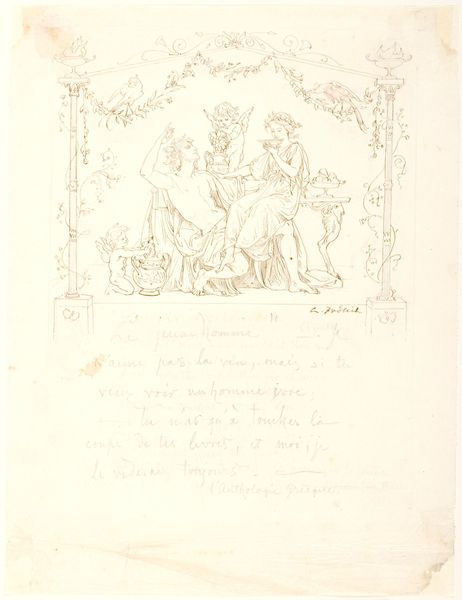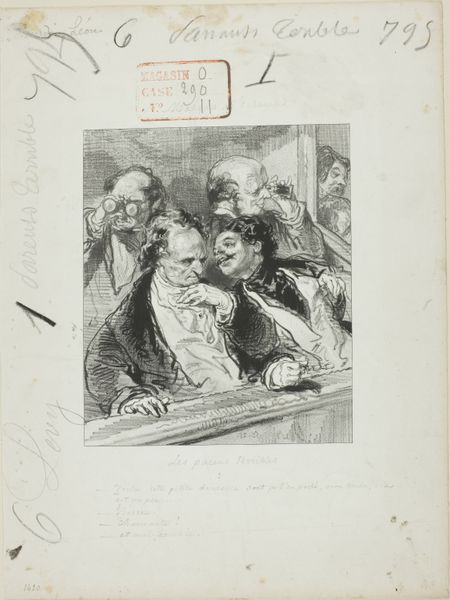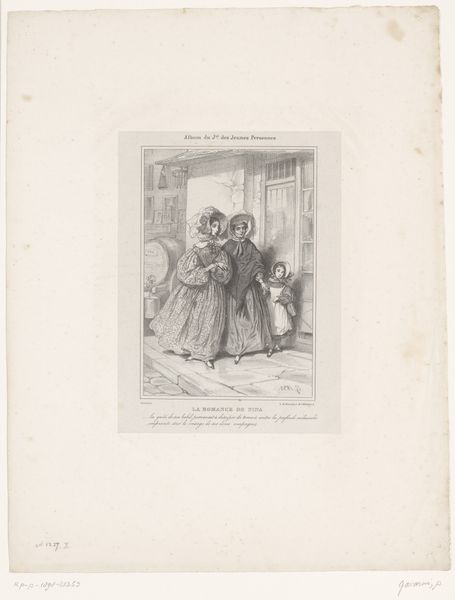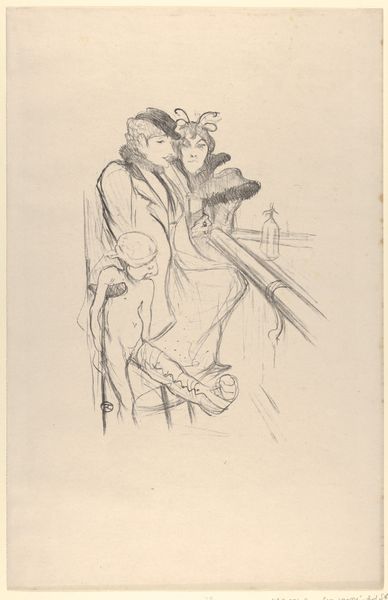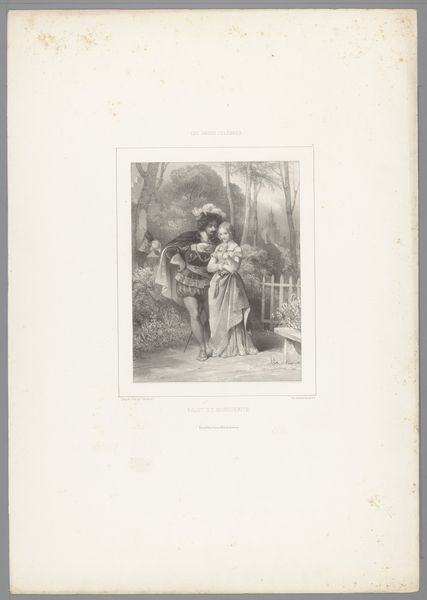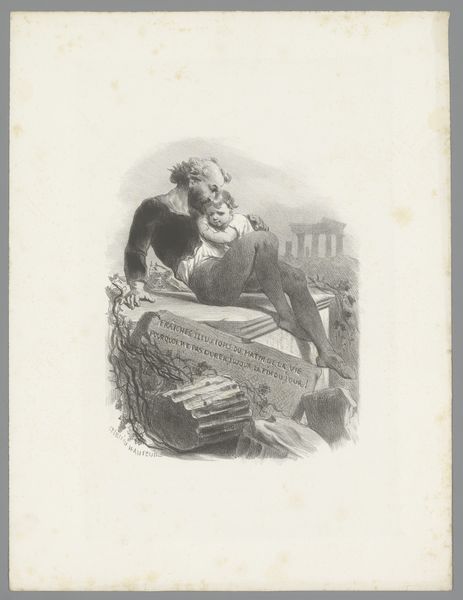
Les-Parents-Terribles series: Don't you think, father... 1853
0:00
0:00
drawing, lithograph, print, paper
#
portrait
#
drawing
#
lithograph
# print
#
paper
Dimensions: 193 × 161 mm (image); 358 × 270 mm (sheet)
Copyright: Public Domain
Editor: Here we have Paul Gavarni’s lithograph from 1853, titled "Les-Parents-Terribles series: Don't you think, father..." It’s a touching image of a father and daughter on a bench, yet there’s an underlying sense of tension. I wonder about their relationship. What historical narratives might be woven into this scene? Curator: Indeed, this print offers a window into mid-19th century French society. Consider the title – "Terrible Parents" – and the power dynamics it suggests. Gavarni often critiqued social norms through his art. Editor: So, it's a social commentary. Can you elaborate on how the print achieves this critique? Curator: Notice the father’s posture, his clothes and weary expression versus the daughter’s concerned stance. The image raises questions about patriarchal authority, generational relationships and the restrictive roles imposed upon women at the time. Think of the revolutions of 1848 and the broader questioning of traditional hierarchies taking place then; where do you think this work might stand politically? Editor: So the father figure, visually weakened, represents perhaps the old order challenged by a more knowing generation? Is that part of why it was exhibited? Curator: Precisely. Gavarni tapped into a contemporary nerve, engaging with evolving social discourse and bringing it to a broader public audience. These prints found their way into homes and coffee houses through popular magazines and became tools for influencing the views of ordinary people. Editor: That's fascinating. It gives the artwork a whole new layer of meaning knowing how and where it was viewed and debated. Curator: It highlights art’s vital role in reflecting and shaping societal dialogues. Editor: I see it now; it’s more than just a portrait; it's a political statement within a familial snapshot! Thank you.
Comments
No comments
Be the first to comment and join the conversation on the ultimate creative platform.


